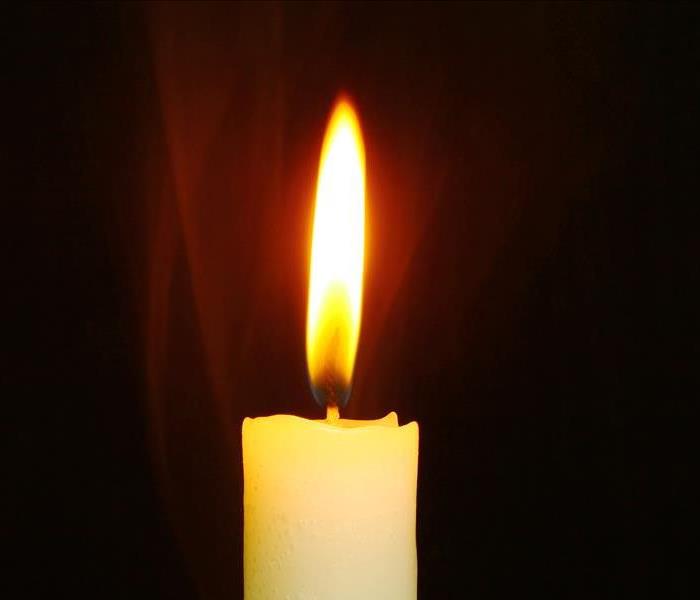7 Tricks to Prevent Candle Fires this Fall
10/2/2018 (Permalink)
Autumn for the beginning of cozy weather and holiday festivities like going to pumpkin patches, trick or treating or even lighting a pumpkin spice candle to enjoy the fleeting days of fall (and in Texas, it goes by fast!)
Candle Safety & Preventing Candle Related Fires
Who doesn’t love lighting the candles, especially in fall and winter? Though precautions have to be made when handling a live flame. There are nearly 24 fires from candles reported per day with December as being the peak month for most candle-related fires from home decoration. One-third of all fires from candles start in the bedroom and cause 36% of deaths. But what may be a surprise is that half of home candle fires happen when left less than twelve inches from a combustible material.
To keep your home and family safe, read these 7 safety tips to stop candles from burning your perfect holiday memories (and a hole in your wallet!):
1. Keep Candles Away from Children and Pets
If there is any advice that is the most important, this is it! Kids and pets can be all over the place and all it takes is one curious finger or fur to close to the flame to get burnt!
2. Never Leave a Candle Without Supervision
Anything can happen when you turn your back. Be aware of the surroundings and keep an eye on the candle.
3. Hide Lighters and Matches
Lighters or matches places too close to a flame or in a child’s reach can cause major destruction. Hide lighters, matches, gas, oil, and combustible items out of sight, up high, or locked up!
SECRET TIP: Use a candle burner to have the same scent fill the house without the fear of the flame!
4. Use Candle Holders...Seriously!
This is such an understated hack! Candle holders are LIFESAVERS and are a great way to decorate for the holidays while still being safe. Place candles inside a flame retardant container, or place on a candle holder to collect melting wax.
5. Use a Snuffer to Put Out Flames
Blowing out a candle or using water to put out a candle fire may cause more harm than good. Keep in mind that wax that forms around the flame is now a liquid and blowing the candle may spray the wax, or pouring water on the candle may cause the wax to spray out of the candle. Using a snuff, cover that is placed over the flame to cut off oxygen source is the safest method of putting out a candle flame.
6. Stick with Flashlights in Emergencies
If the power is cut off or it is dark at night, try to use flashlights over candles. Moving in the dark may cause tripping, and dropping a candle can instantly start a fire on a rug or carpet.
7. Toss Old Candles
Have that favorite candle that is burned to the bottom? Best to throw it out because using candles with a short wick can cause a fire. Try saving the leftover wax by melting what is left of the candle on a candle burner or in a bowl of shallow hot water over a boiling pot, and {CAREFULLY} pour the wax into a new container (be aware of plastics and glass!)
This way you can combine what is left of all your favorite fall candles into a new autumn mix!
That's a Wrap!
Now that you have brushed up on candle safety and preventing future fires for #firepreventionmonth, bring on all the cozy smelling scents!
Though in the case you have experienced a home fire from candles, fireplaces, holiday cooking, grilling or more, SERVPRO of North Richland Hills is there “to make it like it never even happened!”
SERVPRO of North Richland Hills specializes in the cleanup and restoration of commercial and residential property after a water damage event. Our staff is highly trained in property damage restoration. From initial and ongoing training at SERVPRO’s corporate training facility for regular IICRC-industry certification, rest assured our staff is equipped with the knowledge to restore your property. SERVPRO wants our team to be part of your team! Call us at 817-589-1499 or follow us on Facebook, Instagram, and Twitter!
Check out Four Steps to an Effective Business Contingency Plan!
Also, check out Tips for Protecting Your Pets From Fire!
Sources:
https://www.nfpa.org/Public-Education/By-topic/Top-causes-of-fire/Candles





 24/7 Emergency Service
24/7 Emergency Service
